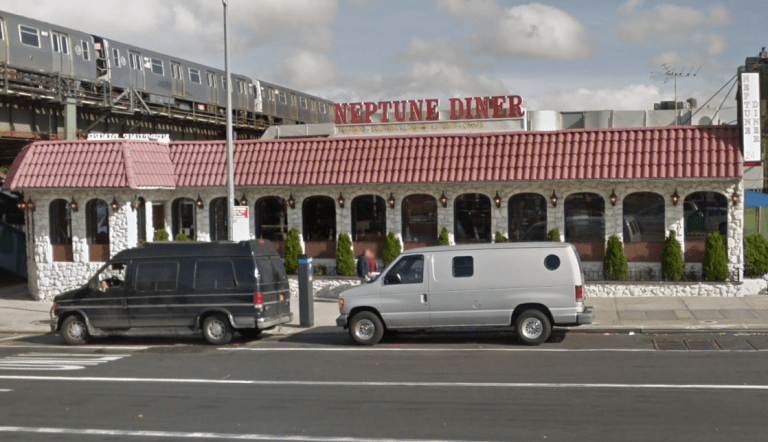
An 11-story building is proposed to go up where the Neptune Diner in Astoria is located (GMaps)
Sept. 23, 2021 By Christian Murray
A developer’s application to upzone a section of 31st Street in Astoria—in order to construct three large residential buildings—was rejected by Community Board 1 Tuesday night.
MDM Development, an Astoria-based real estate company, has filed an application with the city to upzone the east side of 31st Street between Astoria Boulevard North and 24th Avenue in order to develop three residential buildings—two being 11 stories and another, 12 stories.
The buildings would go up where the Neptune Diner, Staples and a nearby vacant lot are currently located. The popular diner and Staples would be bulldozed.
The three buildings would collectively bring 278 units if the rezoning were to be approved, 67 of which would be deemed affordable in accordance with city’s Mandatory Inclusionary Housing requirements. The plan would also bring retail space and community facilities—such as senior and youth centers.
Without the rezoning, however, MDM would only be permitted to build approximately 200 units as of right, according to Frank St. Jacques, a landuse attorney for Akerman LLP who spoke on behalf of the developer. However, MDM would not be required to build the 67 affordable apartments.

The three sites that are part of the development plan (Screenshot of presentation)
The board rejected the plan by a vote of 25 to 4, with four abstentions. The members viewed the scale of the project as too large for the area, and said it would cause hardship to residents in low-rise buildings on adjacent streets. They also noted that the area had already been rezoned in 2010.
“These buildings are out of context with the adjacent low density and mid density neighborhood character,” said CB1’s Land Use and Zoning Committee Chair Elizabeth Erion during Tuesday’s meeting.
Erion said the board received petitions for and against the project—with 450 signatures in support of it and 225 in opposition.
However, she noted that when she analyzed the signatures in support, only 8 of those people lived near the proposed development site. Meanwhile, of the 225 who signed in opposition, 162 of the people who signed it lived in close proximity to the project.
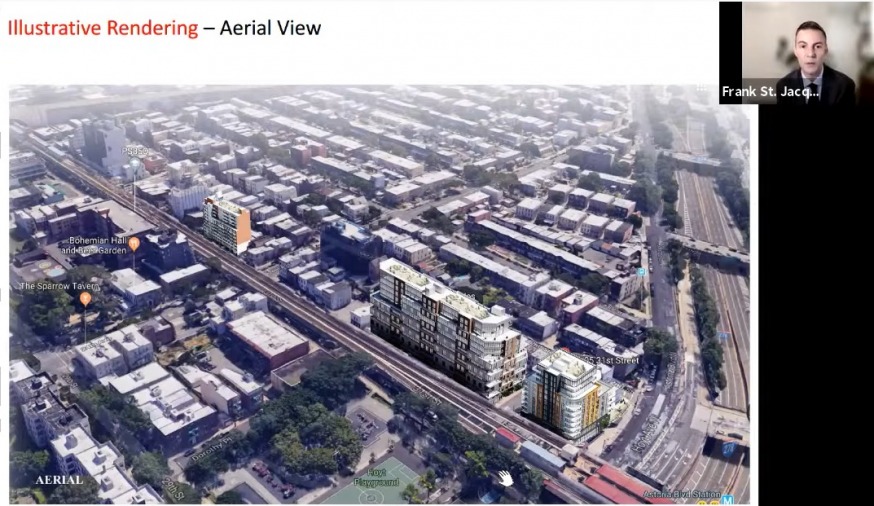
The three sites that are part of the development plan (Screenshot of presentation)
The supporters of the project—as well as the handful of members who voted for it– said the buildings would increase the supply of housing and would bring much-needed affordable housing to the area. They also noted that the development of these sites—adjacent to the Astoria N/W station– was also inevitable.
The three proposed buildings, according to the plan, would vary in size. The building that would replace the Neptune Diner would be 11 stories and consist of 51 units if the rezoning were to be approved. The developer without the rezoning would only be permitted to construct approximately 38 units.
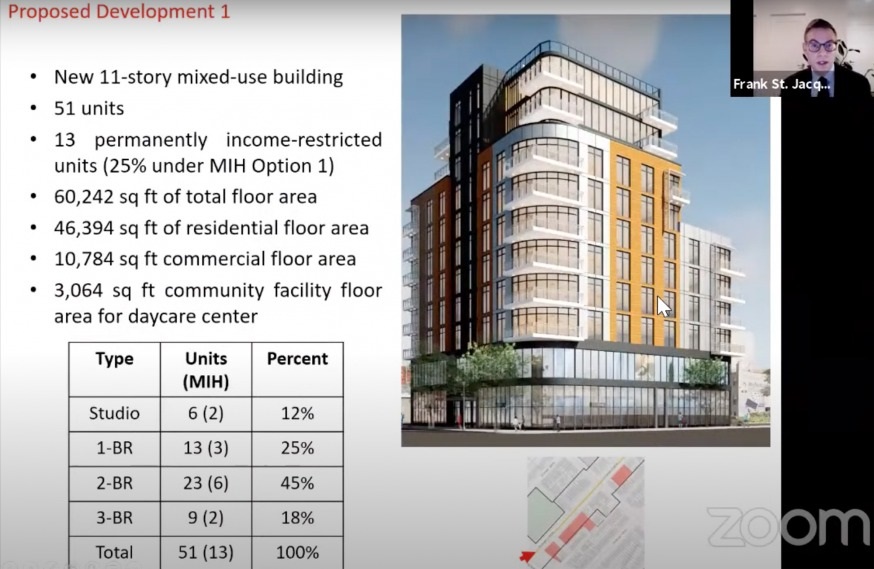
Development Site 1 is where the Neptune Diner and parking lot is currently located (Screen shot of proposed development)
The building proposed to go up on the site currently occupied by Staples (Development 2) would be 12-stories and consist of 161 units. Without the rezoning, an estimated 109 units would be able to be built.
The third building (Development 3) would go up on a vacant lot on 31st Street between 24th Avenue and 23rd Road and would consist of 75 units. Without a rezoning, 60 units would be permitted.
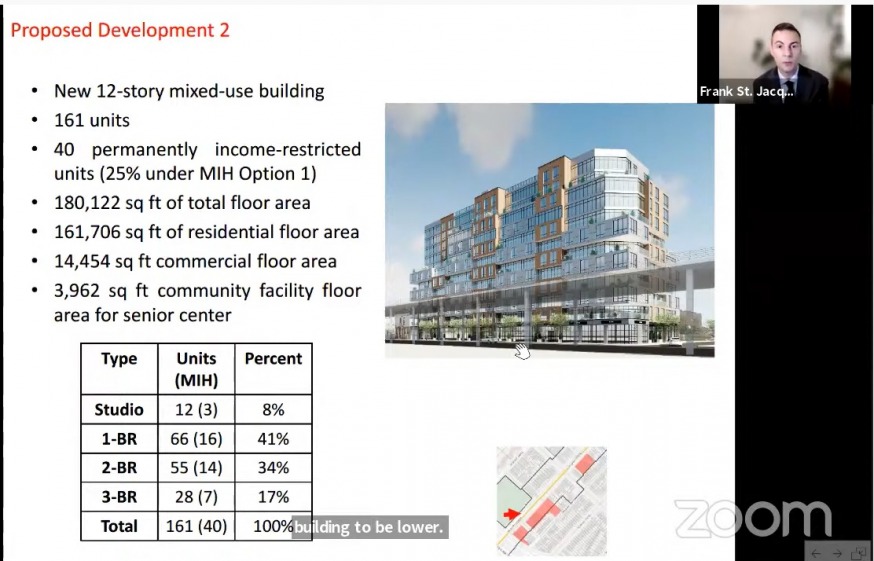
Development site 2 is where Staples and an adjacent parking lot is currently located (Screenshot of proposed development)
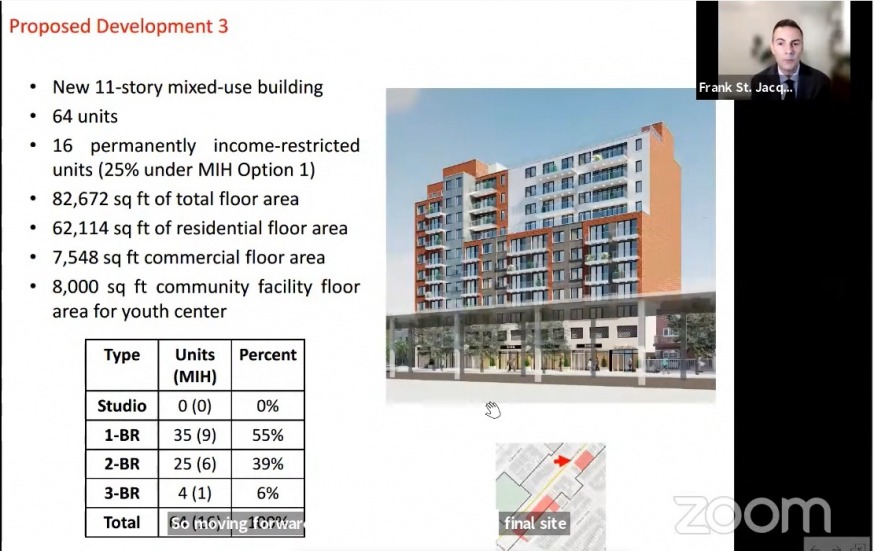
This site is currently an empty lot (screenshot of proposed development)
The income levels for the 67 affordable housing units would be in accordance with Option 1 of the Mandatory Inclusionary Housing (MIH) requirements. The units, therefore, would be for households earning 60 percent – on average – of the area median income, or about $68,000 for a family of four.
Some members argued that there should be more affordable units and that the income levels should come down.
The board’s rejection of the plan, however, is merely advisory.
The plan is now being reviewed by the Queens Borough President whose recommendation is also advisory. The proposal will then go before the City Planning Commission and the City Council, which will ultimately determine its fate.
It is unclear how the council would vote on the plan, since Astoria no longer has a representative in the council. Costa Constantinides stepped down as the councilmember in April to work as the CEO for the Variety Boys and Girls Club of Queens.
The district, however, is likely to have a new representative by the time this goes before the council for a vote later this year. The winner of the general election on Nov. 2 will represent the Astoria district immediately given Constantinides’ early departure.
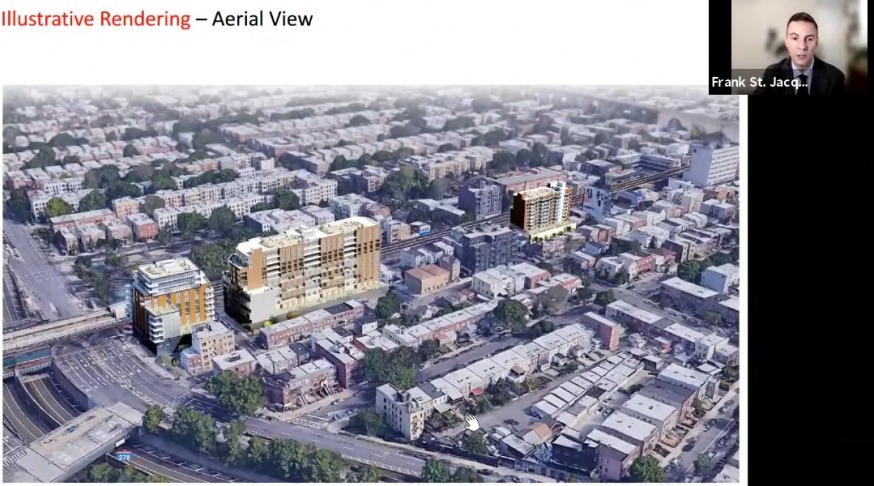
Screen shot of proposed development
4 Comments

Additional density here, near transit, and considering need for housing production, makes sense.
AOC would bend over NOT backwards for anyone wanting to build “affordable” housing.
You didn’t elect a luxury condo developer president by chance did you? If so your comment is laughable ?
A community board doing its job. That’s a novelty these days.